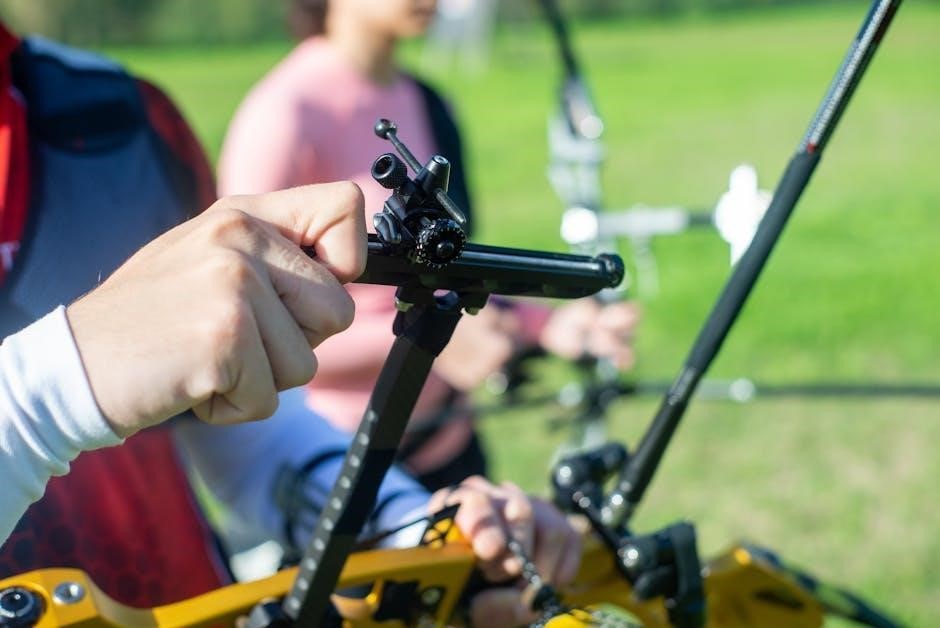A bartender training manual is an essential resource for mastering the skills and knowledge needed to excel in the bartending profession. These guides cover everything from drink preparation and customer service to legal compliance and safety protocols. Whether you’re a novice or an experienced bartender, a well-structured manual provides a comprehensive foundation for success. With downloadable PDF options widely available, accessing these valuable tools has never been easier.
Overview of Bartender Training Manuals
A bartender training manual is a comprehensive guide designed to equip individuals with the knowledge and skills necessary to excel in the bartending profession. These manuals typically cover a wide range of topics, from foundational bartending techniques to advanced mixology, customer service, and legal compliance. They often include detailed sections on drink preparation, inventory management, safety protocols, and best practices for interacting with customers. Many manuals are available in downloadable PDF formats, making them easily accessible for training purposes. Whether for new hires or experienced bartenders, these resources provide a structured approach to learning and professional development. They are tailored to meet the diverse needs of bars, restaurants, and hospitality establishments, ensuring consistency and excellence in service delivery.

Importance of Using a Bartender Training Manual
Importance of Using a Bartender Training Manual

A bartender training manual is a vital tool for ensuring consistency, quality, and safety in bar operations. It serves as a comprehensive resource for both new and experienced bartenders, providing standardized procedures for drink preparation, customer service, and legal compliance. By following a structured manual, bartenders can develop foundational knowledge and skills, such as free-pouring techniques, mixology, and inventory management. This not only enhances operational efficiency but also minimizes errors and potential legal risks. Additionally, a well-designed manual fosters a culture of continuous learning and professional growth, enabling bartenders to stay updated on industry trends and best practices. Ultimately, it ensures a high level of customer satisfaction and maintains the reputation of the establishment.
Structure and Content of a Typical Bartender Training Manual
A typical bartender training manual is structured to cover all aspects of bartending, ensuring comprehensive learning. It begins with an introduction to the role and responsibilities of a bartender, followed by detailed sections on drink preparation techniques, recipes, and mixology. The manual also includes guidance on customer service, conflict resolution, and legal compliance, such as alcohol awareness and ID verification. Additional sections focus on safety and sanitation, inventory management, and the use of bar tools and equipment. Some manuals also provide downloadable templates, checklists, and resources for continuous learning. The content is designed to be practical, offering hands-on training tips and best practices for both new and experienced bartenders.

Core Competencies for Bartenders
A bartender must possess strong technical skills, such as drink preparation and mixology, along with excellent customer service abilities. Proficiency in multitasking, attention to detail, and adherence to safety protocols are also essential.
The Role and Responsibilities of a Bartender
A bartender’s primary role involves preparing and serving beverages, ensuring exceptional customer experiences. Responsibilities include maintaining a clean workspace, managing inventory, and adhering to health and safety regulations. Bartenders must also handle cash transactions accurately, maintain professionalism, and provide excellent service by understanding customer preferences and needs. Additionally, they are expected to work efficiently during peak hours, manage their time effectively, and collaborate with other staff to ensure smooth operations. Compliance with legal requirements, such as preventing underage drinking, is also a critical part of their duties. Overall, bartenders play a vital role in creating a positive and safe environment for patrons while upholding the establishment’s standards and reputation.
Essential Knowledge for Bartenders
Essential knowledge for bartenders includes understanding spirits, beers, wines, and mixers, as well as classic cocktail recipes and modern mixology trends. Bartenders must master drink preparation techniques, such as free-pouring, shaking, and muddling, while adhering to recipes and measurement standards. Knowledge of glassware, garnishes, and presentation is also crucial for enhancing the customer experience. Additionally, bartenders need to understand basic beer and wine service, including proper pouring techniques and pairing suggestions. Familiarity with legal compliance, such as preventing underage drinking and responsible serving practices, is vital. Lastly, maintaining a clean and organized workspace, including sanitizing equipment and managing inventory, ensures efficiency and safety. This foundational knowledge equips bartenders to deliver high-quality service and create memorable experiences for patrons.
Foundational Skills Every Bartender Should Master
Mastering foundational bartending skills is crucial for success in the industry. These include proficient free-pouring techniques, accurate measurement using jiggers, and understanding mixing methods like shaking, stirring, and muddling. Bartenders must also develop expertise in crafting classic cocktails and modern creations, ensuring consistency and quality. Essential skills extend to maintaining a clean and organized workspace, efficiently managing bar tools, and optimizing customer transaction times. Knowledge of health and safety protocols, such as sanitizing equipment and preventing cross-contamination, is equally important. Additionally, bartenders should master inventory management basics, like tracking stock levels and minimizing waste. These foundational skills form the backbone of a bartender’s expertise, enabling them to deliver exceptional service and create memorable experiences for patrons while maintaining operational efficiency.
The Evolution of the Bartender’s Role in the Hospitality Industry
The role of bartenders has evolved significantly over the years, transitioning from basic drink preparation to becoming skilled mixologists and hospitality experts. Historically, bartenders focused on efficient service and maintaining a clean environment. Today, they are expected to craft creative cocktails, use premium ingredients, and provide personalized experiences. The rise of mixology has elevated bartending to an art form, emphasizing innovation and flavor profiling. Additionally, bartenders now play a key role in sustainability, reducing waste, and promoting eco-friendly practices. Modern training manuals reflect these changes, emphasizing not only technical skills but also the importance of storytelling, customer engagement, and adaptability in a rapidly changing industry. This shift highlights the bartender’s growing influence as a culinary and cultural ambassador.

Technical Skills and Techniques
Technical skills and techniques are fundamental for bartenders, including drink preparation, free pouring, and mixology. Mastery of bar tools and measurement ensures precision and creativity in crafting cocktails.
Drink Preparation Techniques and Recipes
Drink preparation techniques and recipes are central to bartending, requiring precision and creativity. Bartenders must master classic cocktails, modern mixology, and signature drinks. Free pouring, jigger measurements, and tool usage like shakers and muddlers are essential. Recipes often include detailed ingredient ratios and step-by-step instructions. Understanding flavor profiles and pairing techniques enhances drink quality; Safety and efficiency in preparation are emphasized, ensuring a clean and organized workspace. Proper techniques prevent waste and maintain consistency. These skills, combined with recipe knowledge, enable bartenders to craft memorable beverages, elevating the customer experience and establishing their expertise behind the bar.
Free Pouring and Measurement Techniques
Free pouring and measurement techniques are fundamental skills for bartenders, ensuring accuracy and efficiency. Free pouring involves measuring liquor without a jigger, using counts to determine ounces. Each count represents a quarter ounce, allowing precise control. This method requires practice to master, as over-pouring can lead to waste and inconsistency. Measurement techniques also include using jiggers for exact amounts, especially for complex recipes; Combining free pouring with jigger use ensures versatility and adaptability. These skills are critical for maintaining drink quality, managing inventory, and optimizing profitability. Proper training and regular practice help bartenders refine their techniques, ensuring consistent and professional service behind the bar.
The Use of Bar Tools and Equipment
The use of bar tools and equipment is fundamental to efficient and precise drink preparation. Essential tools include shakers, jiggers, muddlers, and Hawthorne strainers, each serving specific functions. Shakers are used for mixing and chilling ingredients, while jiggers ensure accurate measurements. Muddlers crush fruits and herbs, and strainers separate solids from liquids. Other tools like bottle openers and pour spouts streamline workflow. Understanding how to use these tools effectively is crucial for creating consistent, high-quality cocktails. Proper maintenance and organization of equipment also contribute to a smooth and professional service. Mastery of these tools enhances a bartender’s efficiency, allowing them to focus on creativity and customer satisfaction, making them indispensable in any bar setting.

Customer Service and Interaction
Excellent customer service is vital in bartending, requiring active listening, attentiveness, and a welcoming demeanor. Ensuring prompt, friendly, and efficient service enhances the overall bar experience for patrons.
Best Practices for Customer Service in a Bar Setting
Providing exceptional customer service in a bar setting requires a combination of attentiveness, professionalism, and interpersonal skills. Greet every customer promptly, make eye contact, and ensure they feel welcome. Active listening is crucial—pay attention to their preferences and tailor recommendations accordingly. Maintain a clean and organized workspace to create a positive environment. Handle disputes or dissatisfaction calmly and resolve issues efficiently. Be knowledgeable about your menu, including cocktails, wines, and beers, to guide customers effectively. Ensure transactions are quick and accurate to minimize wait times. Building rapport and fostering a friendly atmosphere encourages repeat business and positive reviews. Consistency and adaptability are key to meeting diverse customer needs and ensuring a memorable experience.
Handling Different Types of Customers
Mastering the art of handling various customer types is vital for bartenders. Regular customers appreciate personalized service and familiarity with their preferences, fostering loyalty. First-time visitors require clear communication and patience to make them feel comfortable. Large groups demand efficiency and attention to ensure timely service. Difficult patrons, such as those who have had too much to drink, must be managed with empathy and firmness to maintain a safe environment. Understanding diverse needs and adapting your approach ensures positive interactions. Remaining calm, patient, and professional, regardless of the situation, is key to providing excellent service and resolving conflicts effectively. This skill set is often detailed in bartender training manuals to equip staff with practical strategies for all scenarios.
Conflict Resolution and Dealing with Difficult Customers
Conflict resolution is a critical skill for bartenders, as it ensures a positive experience for all patrons. Remaining calm and composed is essential when dealing with difficult customers. Active listening and empathetic responses can de-escalate tensions. Acknowledging concerns without taking them personally helps maintain professionalism. Offering solutions, such as complimentary items or refunds, can resolve issues amicably. Setting clear boundaries with polite yet firm communication is key. Knowing when to involve management or security ensures safety and adherence to policies. Effective conflict resolution not only preserves customer satisfaction but also protects the bar’s reputation. Training manuals often provide practical strategies for handling such situations, ensuring bartenders are equipped to manage conflicts confidently and professionally.
Optimizing Customer Transaction Times
Efficient customer transactions are vital for maintaining a smooth bar operation. Bartenders should prioritize streamlining interactions to reduce wait times without compromising service quality. Preparing ingredients in advance and organizing tools strategically can save valuable seconds. Implementing a point-of-sale system that integrates inventory management and payment processing enhances speed and accuracy. Training manuals emphasize the importance of multitasking, such as taking orders while preparing drinks, to minimize delays. Additionally, offering digital menus or mobile ordering options can further expedite the process. By focusing on these strategies, bartenders can ensure quick and seamless transactions, improving customer satisfaction and increasing overall efficiency during peak hours.

Safety and Sanitation
Maintaining a clean and safe bar environment is crucial for preventing accidents and ensuring customer well-being. Staff must adhere to strict hygiene practices, regularly sanitize equipment, and follow health regulations to minimize risks and create a safe space for both employees and patrons.
Maintaining a Clean and Safe Bar Environment
Maintaining a Clean and Safe Bar Environment
Maintaining a clean and safe bar environment is essential for protecting both customers and staff from health risks. Regular sanitization of surfaces, equipment, and tools ensures a hygienic workspace. Bartenders must wash hands frequently, especially before handling ingredients or serving drinks. Proper storage of ingredients and disposal of waste prevent contamination. Spills and breakages should be cleaned immediately to avoid accidents. Additionally, ensuring that bar tools and glassware are washed and sanitized after each use minimizes the risk of spreading illnesses. A well-organized bar also reduces tripping hazards and improves efficiency. By adhering to these practices, bartenders create a safe and welcoming atmosphere for everyone. Regular inspections and staff training further reinforce these critical habits.
Preventing Accidents and Injuries in the Workplace
Preventing accidents and injuries in the workplace is crucial for ensuring a safe and efficient bar environment. Bartenders should immediately clean up spills to avoid slips and trips. Proper footwear with non-slip soles is essential to prevent falls. When lifting heavy objects, such as crates or bottles, proper lifting techniques should be used to avoid strains. Additionally, handling glassware and sharp tools requires care to prevent cuts. Fire extinguishers and emergency exits should always be accessible and clearly marked. Regular inspections of equipment and the workspace can identify potential hazards before they cause harm. By fostering a culture of safety and vigilance, bartenders can significantly reduce the risk of accidents, creating a secure environment for both staff and customers.
Understanding Health and Safety Regulations
Understanding health and safety regulations is vital for maintaining a safe and compliant bar environment. Bartenders must adhere to local health codes, ensuring proper sanitation and hygiene practices. This includes regular handwashing, proper food handling, and cleaning of equipment and surfaces. Knowledge of regulations regarding waste disposal and chemical use is also essential. Bartenders should be trained to recognize and report potential hazards, such as broken glass or slippery floors, to prevent accidents. Familiarity with emergency procedures, like fire evacuation plans, is critical. Compliance with health and safety laws not only protects staff and customers but also avoids legal penalties. By staying informed about these regulations, bartenders can contribute to a safe and healthy workplace environment.

Legal Considerations
Legal considerations in bartending involve understanding alcohol laws, responsible serving practices, and ID verification to prevent underage drinking. Adhering to these regulations ensures compliance and minimizes liability risks. Alcohol laws vary by location, so staying informed is crucial. Proper training in legal compliance ensures bartenders serve alcohol responsibly, avoiding legal consequences. Knowledge of local ordinances and health codes is also essential for maintaining a legally sound bar operation. By following these guidelines, bartenders can provide a safe and lawful environment for customers while protecting their establishment from potential legal issues.
Alcohol Awareness and Responsible Serving Practices
Alcohol awareness is a critical component of bartender training, emphasizing the importance of responsible serving practices. Bartenders must understand the effects of alcohol on individuals, recognize signs of intoxication, and prevent over-serving. Responsible practices include using jiggers for accurate measurements and refusing service to intoxicated patrons. Training manuals often highlight strategies to identify fake IDs and prevent underage drinking. Legal compliance is non-negotiable, as serving alcohol to minors or visibly intoxicated individuals can lead to severe consequences. Bartenders should also promote a safe drinking environment, offering water and non-alcoholic options. Proper training ensures they can handle situations ethically and legally, protecting both customers and the establishment. Continuous education on alcohol awareness is essential for maintaining a responsible and safe bar operation.
Preventing Underage Drinking and ID Verification
Preventing underage drinking is a legal and ethical responsibility for bartenders. Training manuals emphasize the importance of verifying patrons’ ages through valid identification. Acceptable forms of ID include driver’s licenses, state IDs, and passports, and bartenders must ensure they are not expired or altered. Techniques such as using black lights or ID scanners can help detect fraudulent documents. If an individual cannot provide valid ID or appears underage, service must be refused. Manuals also stress the consequences of serving minors, including legal penalties and fines. Bartenders are trained to handle such situations politely but firmly, ensuring compliance with local laws and maintaining a safe environment for all patrons. Proper ID verification protocols are essential for preventing underage drinking and protecting the establishment from liability.
Legal Compliance in Bartending Operations
Legal compliance is a cornerstone of professional bartending, ensuring adherence to local, state, and federal laws. Bartender training manuals emphasize the importance of understanding and implementing legal standards to avoid penalties and protect the establishment. Key areas include age verification, serving limits, and licensing regulations. Bartenders must be trained to recognize and refuse service to intoxicated patrons, as well as prevent underage drinking through proper ID checks. Knowledge of specific laws, such as blood alcohol content limits and prohibited serving practices, is essential. Manuals also highlight the consequences of non-compliance, including fines, legal action, and loss of liquor licenses. By following legal guidelines, bartenders contribute to a safe and responsible bar environment, safeguarding both patrons and the business. Legal compliance training is a critical component of every bartender’s education.

Bar Management and Operations
Bar management and operations involve overseeing daily activities to ensure efficiency and profitability. Key tasks include inventory control, cost management, and fostering teamwork to maintain smooth workflows.
Inventory Management and Control
Effective inventory management is crucial for maintaining profitability and operational efficiency. Bartender training manuals emphasize tracking stock levels, monitoring usage, and reordering supplies to prevent shortages or overstocking. Implementing a first-in-first-out system ensures older products are used before they expire. Regular audits help identify discrepancies and reduce waste. Manual or digital tools, such as inventory spreadsheets or software, can streamline this process. Proper management also involves understanding par levels for ingredients and supplies, ensuring enough stock for peak periods without excess. By optimizing inventory control, bars can minimize costs, reduce waste, and maintain consistent service quality. These strategies are often detailed in bartender training manuals to help teams manage resources efficiently and sustainably.
Cost Control and Profit Management
Cost control and profit management are vital for ensuring the financial health of a bar. Bartender training manuals highlight strategies to monitor expenses, optimize pricing, and reduce waste. By tracking usage and implementing portion controls, bartenders can minimize over-pouring and ingredient waste. Profit margins are further enhanced through careful inventory management and negotiating favorable terms with suppliers. Regular financial audits and performance reviews help identify areas for improvement. Training manuals also emphasize the importance of upselling and promoting high-margin items to boost revenue. By balancing cost-effective practices with quality service, bars can maintain profitability while delivering exceptional customer experiences. These techniques are essential for sustainable success in the competitive hospitality industry.
Working Effectively as Part of a Team
Effective teamwork in bartending relies on clear communication and coordination among staff to ensure accurate order execution and seamless service delivery. Delegating tasks during peak times, such as one bartender handling drinks while another manages the register, optimizes workflow and reduces stress. Supporting overwhelmed colleagues maintains efficiency and a positive work environment. A respectful and professional attitude, even under pressure, fosters a collaborative atmosphere. Strong teamwork not only enhances customer satisfaction but also contributes to the bar’s reputation and long-term success by ensuring a smooth, enjoyable experience for patrons.

Additional Resources and Tools
Discover downloadable bartender training manuals, guides, and templates to enhance your skills. Explore microlearning content, recommended reading, and tools for continuous learning and professional development in bartending.
Recommended Reading for Bartenders
Enhance your bartending expertise with essential reading materials, including The Bartender Training Manual by Ryan Dahlstrom, a certified expert in the field. This guide offers insights into advanced mixology, customer service, and legal compliance. Additionally, explore resources like The Bartender’s Guide to Cocktail Creation and Bar Operations Manual for in-depth knowledge on drink preparation and bar management. Supplementary reading materials, such as Microlearning Guides, provide concise, actionable tips for skill development. Platforms like Bar Manuals and Open Library offer free, downloadable PDFs and editable templates to support your learning journey. These resources ensure a well-rounded understanding of bartending, from foundational techniques to advanced strategies.
Downloadable Templates and Checklists
Streamline your bartending operations with downloadable templates and checklists designed to enhance efficiency. Platforms like Bar Manuals offer customizable templates for inventory management, pour tests, and customer transaction logs. These tools are essential for maintaining organization and consistency behind the bar. Additionally, free PDF guides provide pre-designed checklists for tasks such as sanitization schedules, ingredient measurements, and legal compliance.Editable templates allow you to tailor resources to your specific needs, ensuring seamless integration into your workflow. Whether you’re managing inventory or tracking performance, these downloadable assets are invaluable for maintaining high standards and optimizing bar operations. They are readily available online, making it easy to access and implement them in your bartending practice.
Continuous Learning and Professional Development
Continuous learning is crucial for bartenders to stay updated with industry trends and refine their skills. Professional development resources, such as downloadable manuals and microlearning modules, offer flexible ways to enhance knowledge; Platforms like Bar Manuals provide free monthly downloads, ensuring access to the latest techniques and best practices. Bartenders can benefit from mixology courses, certification programs, and workshops to expand their expertise. Regular training sessions and hands-on practice help refine skills like free-pouring and cocktail creation. Staying informed about health regulations, customer service standards, and legal compliance is also essential. By prioritizing ongoing education, bartenders can advance their careers and contribute to the success of their establishments, ensuring they remain competitive in a dynamic industry.
